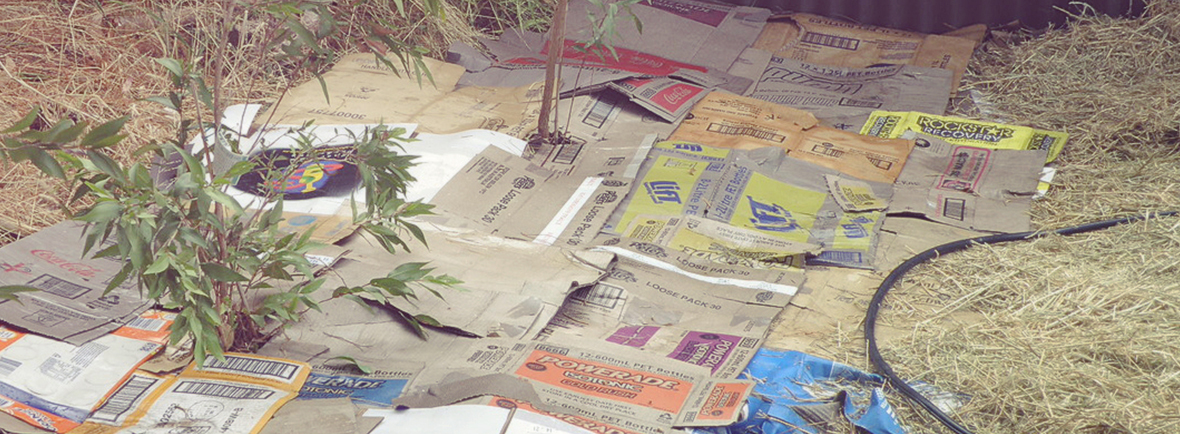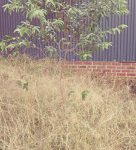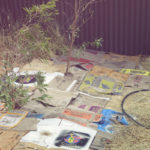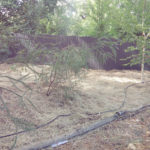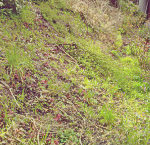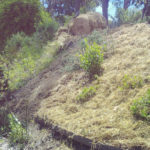No weed gardening!
With the rain we’ve had in the last few weeks I’m hoping that the season has broken here in southern Australia, so in the next few posts I will be looking at some of the outside activities that we can do to get our gardens ready for winter, and also to prepare for a gorgeous garden in spring.
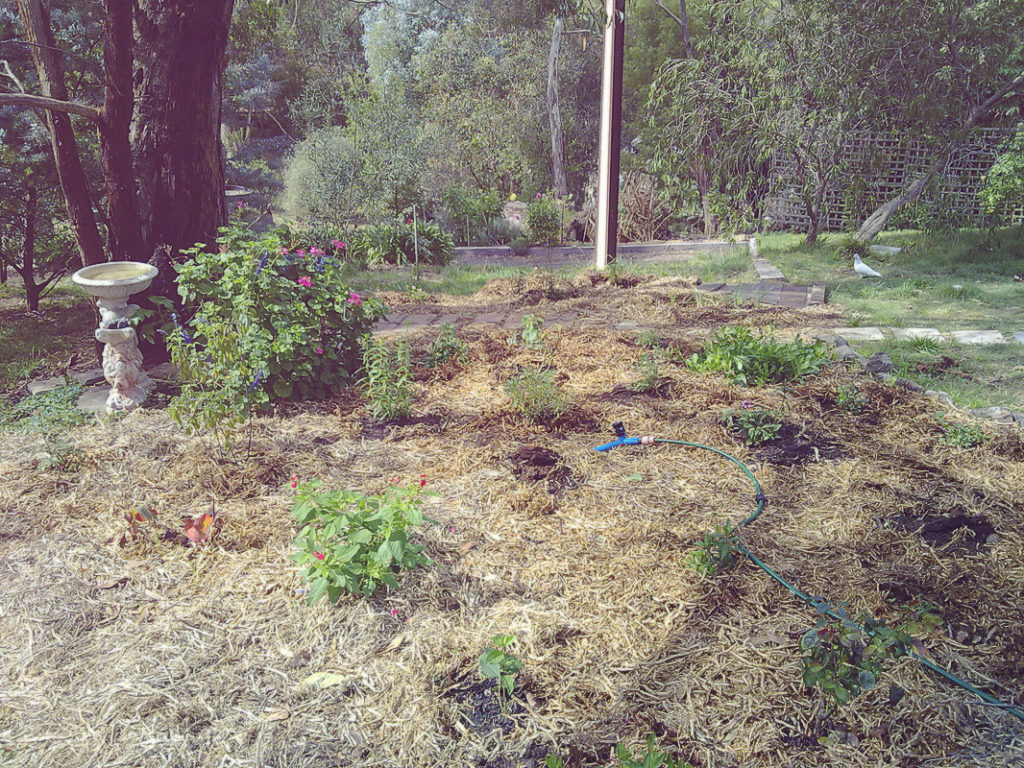
In this article I will be sharing my method for easy weed control. This is not exclusively mine, but one that I constantly use to ease the hard work of getting rid of unwanted plants. I have tackled the worst weeds in this way, conquering couch, kikuyu and even oxalis (sour-sob). The tougher the weed, the more vigilant you need to be in covering thickly in the beginning and checking for regrowth. But even if you get a small amount returning, it’s easier work than trying to pull it all out in the first place.
Here’s how I do it:
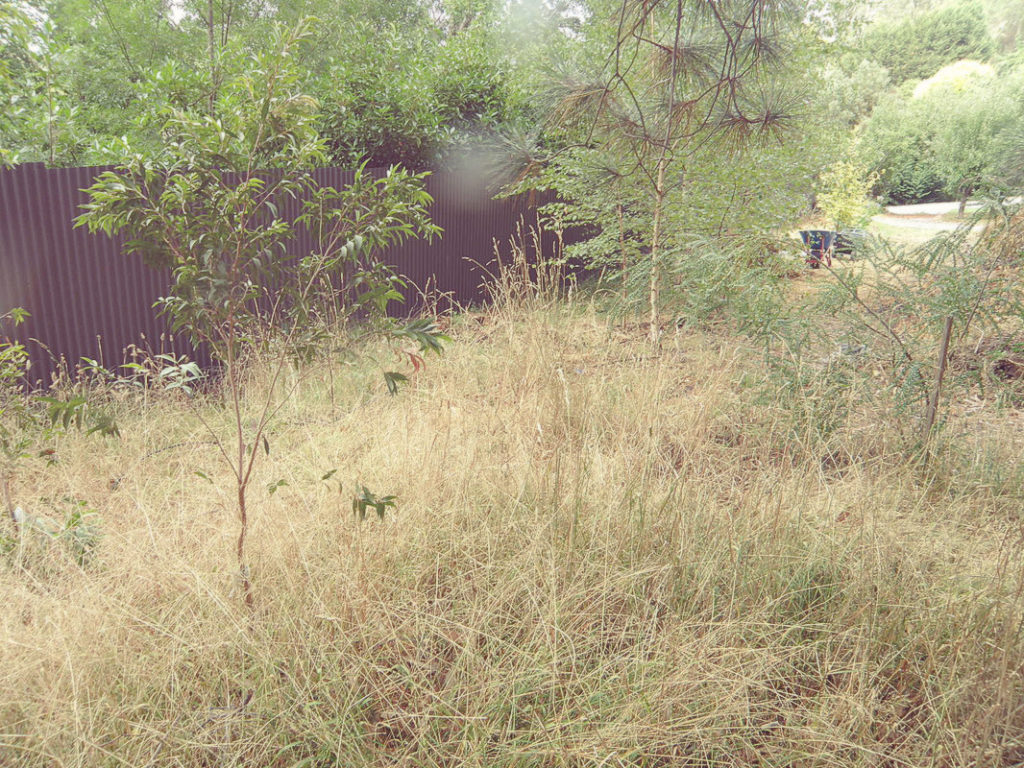
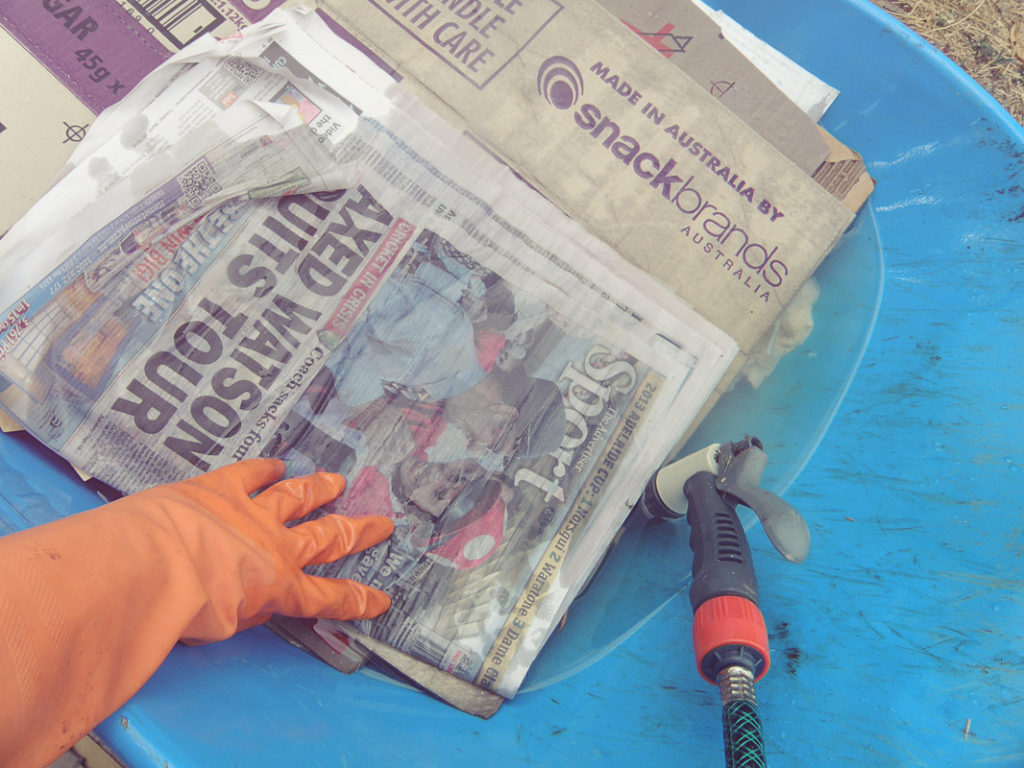
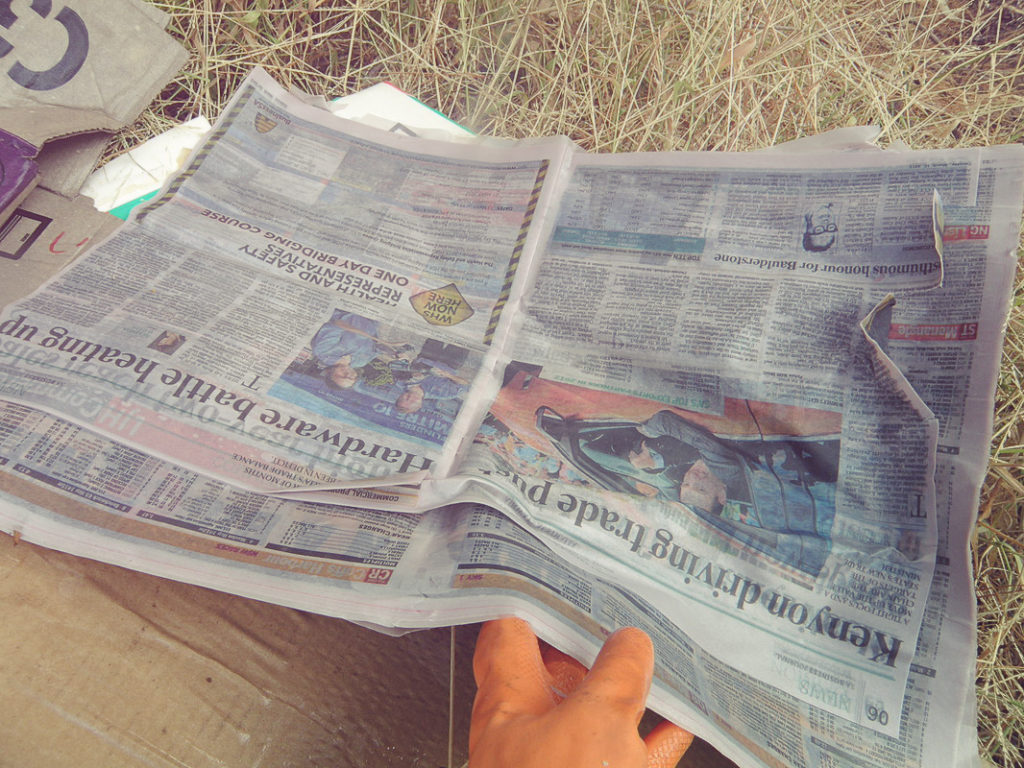
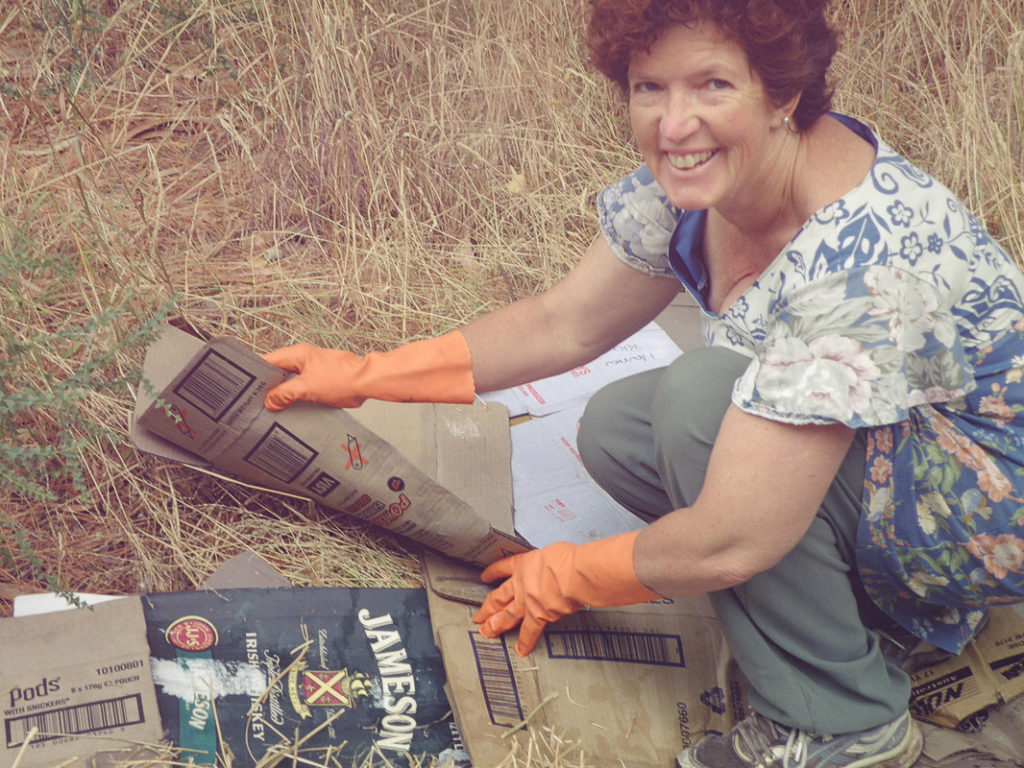
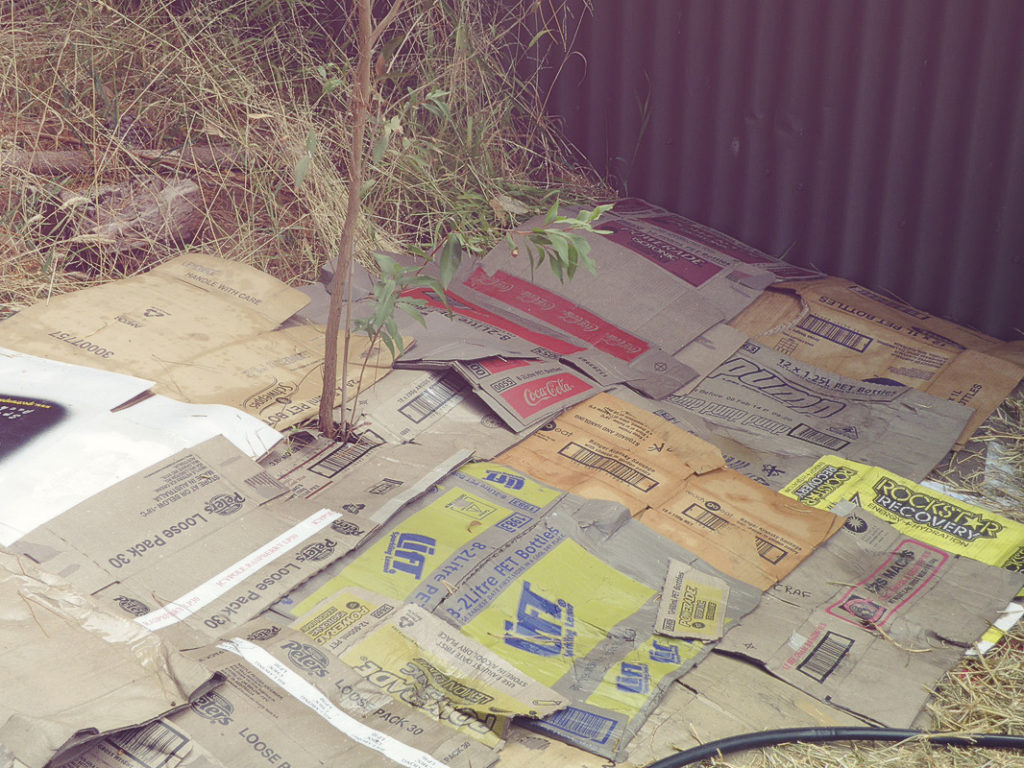
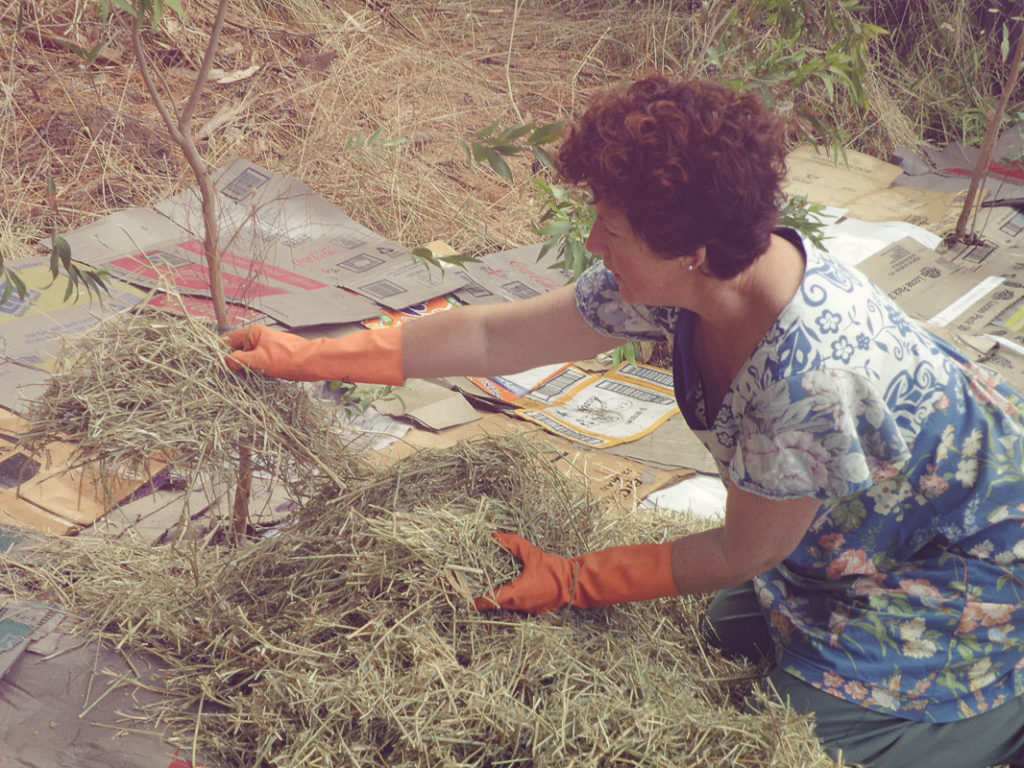
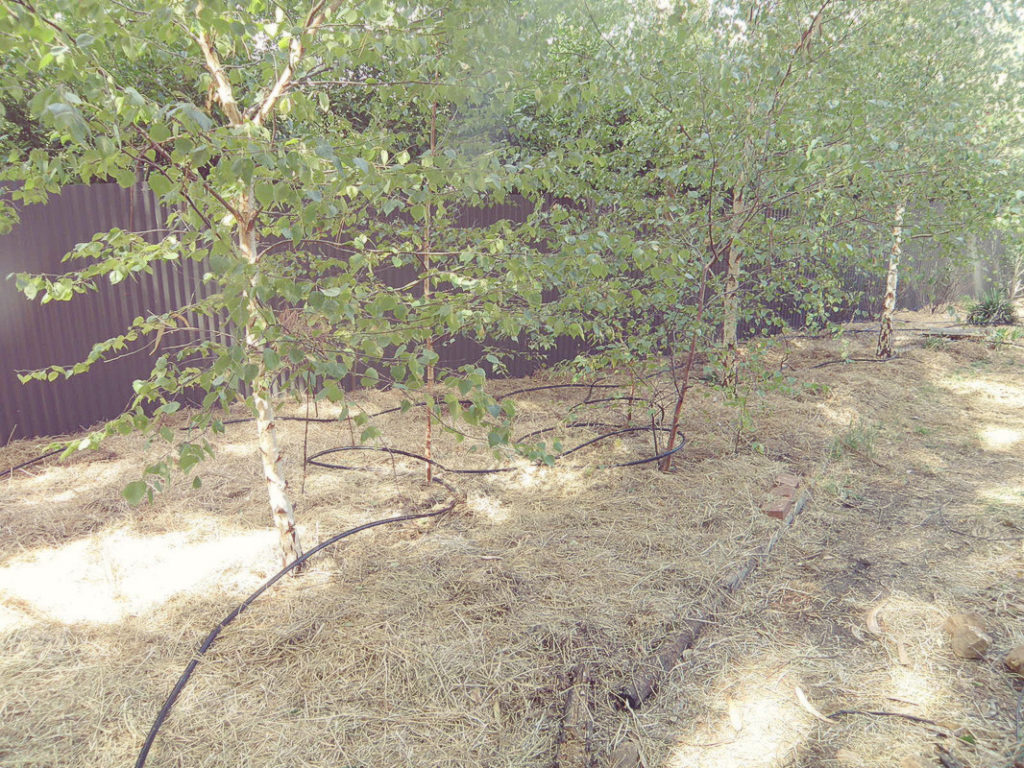
I use this method:
- At the edge of a garden bed to stop lawn/grass invading the garden.
- Before I plant a new bed, preferably 8 weeks before planting. This is not essential – you just have to be more alert for regrowth. Covering and mulching reduces maintenance, so is especially good for difficult spaces.
- Around existing trees and shrubs.
There are several reasons why I use this process:
- Placing covering and mulch over weeds smothers them so they can’t photosynthesize, eventually killing them. As the weeds decompose, they add organic matter to the soil.
- Using paper products like newspaper and cardboard also adds to the organic matter in the soil and provides food for worms, microorganisms and other creatures, increasing the activity in your soil. This is something that weed mat and plastic cannot provide.
- Mulching is essential for our climate, as it stops the soil drying out and keeps plant roots cool. Straw or bark mulch is perfect.
- It’s not rocket science, so everyone can do it, and using newspaper and cardboard recycles free waste!
Things to note:
- Be careful mulching around roses and fruit trees to avoid disease, although I have mulched right up to both without problems. If you are concerned, a buffer of about 30cms can be left around the stem, or the mulch can be thinner up to the stem or trunk.
- If you are mulching around perennials or clumping plants, you will have to weed close to the plant itself, then mulch. If the plant is infested with weeds, eg couch, it may be easier to pull the whole clump up, weed thoroughly, then replant.
- The no weed method doesn’t work well with gardens that have a lot of self-sown plants. If you have this type of garden, you will need to weed it all by hand, or isolate areas for self-sown plants to be left unmulched.
- Persistent weeds such as oxalis (sour-sob) and onion weed must be covered very thickly in order to stop them creeping through the mulch. This is why I allow at least 8 weeks before planting, but if you don’t have the time to wait, you will need to be vigilant and remove any weeds that regrow. If you don’t succeed first time, recover over the mulch – it won’t harm the plants and will add more organic matter to your soil.
I hope you give this method a try – it has saved me many hours of back-breaking weeding, and saved clients money too!
Happy gardening until next time,
Amanda


